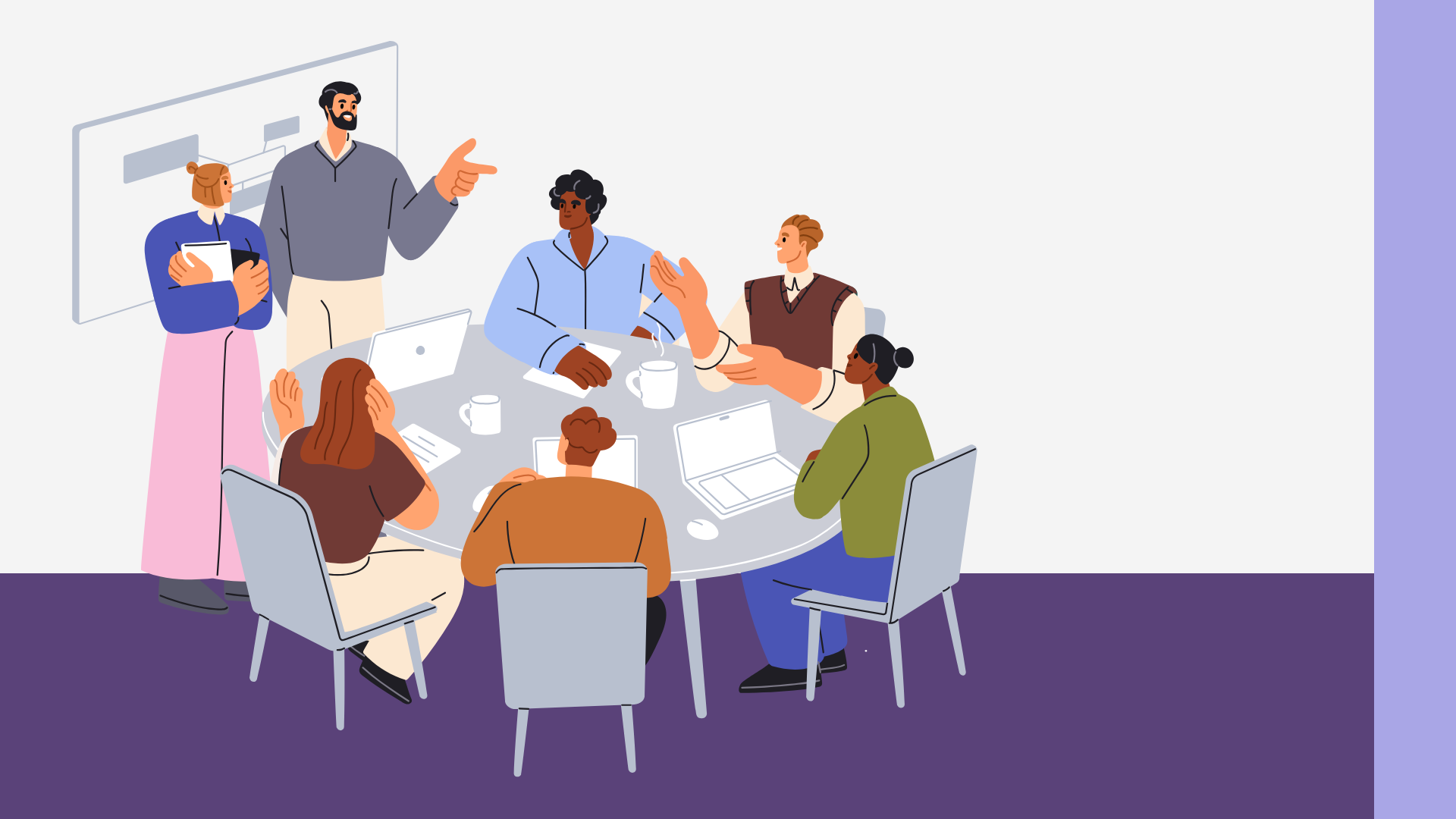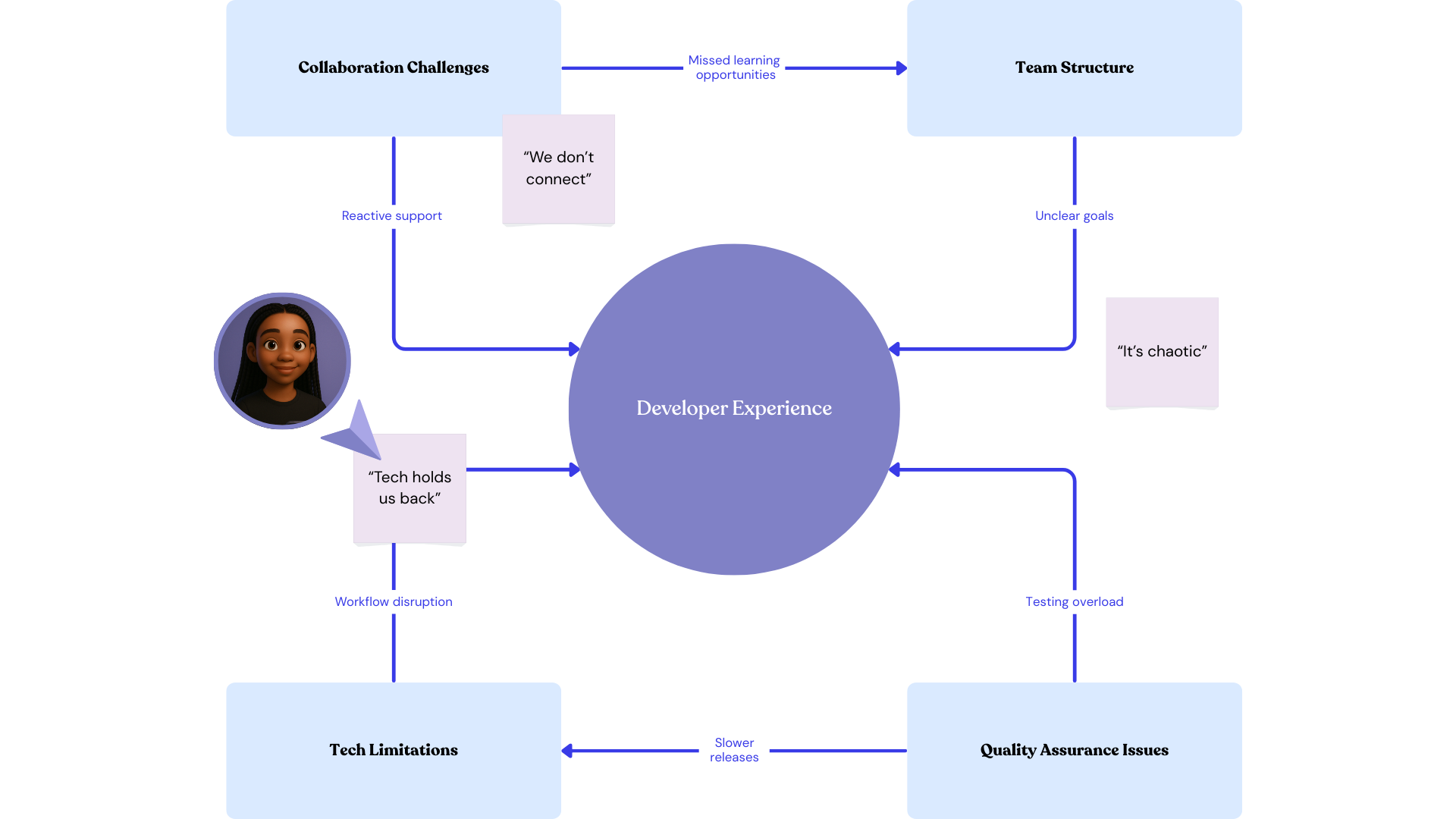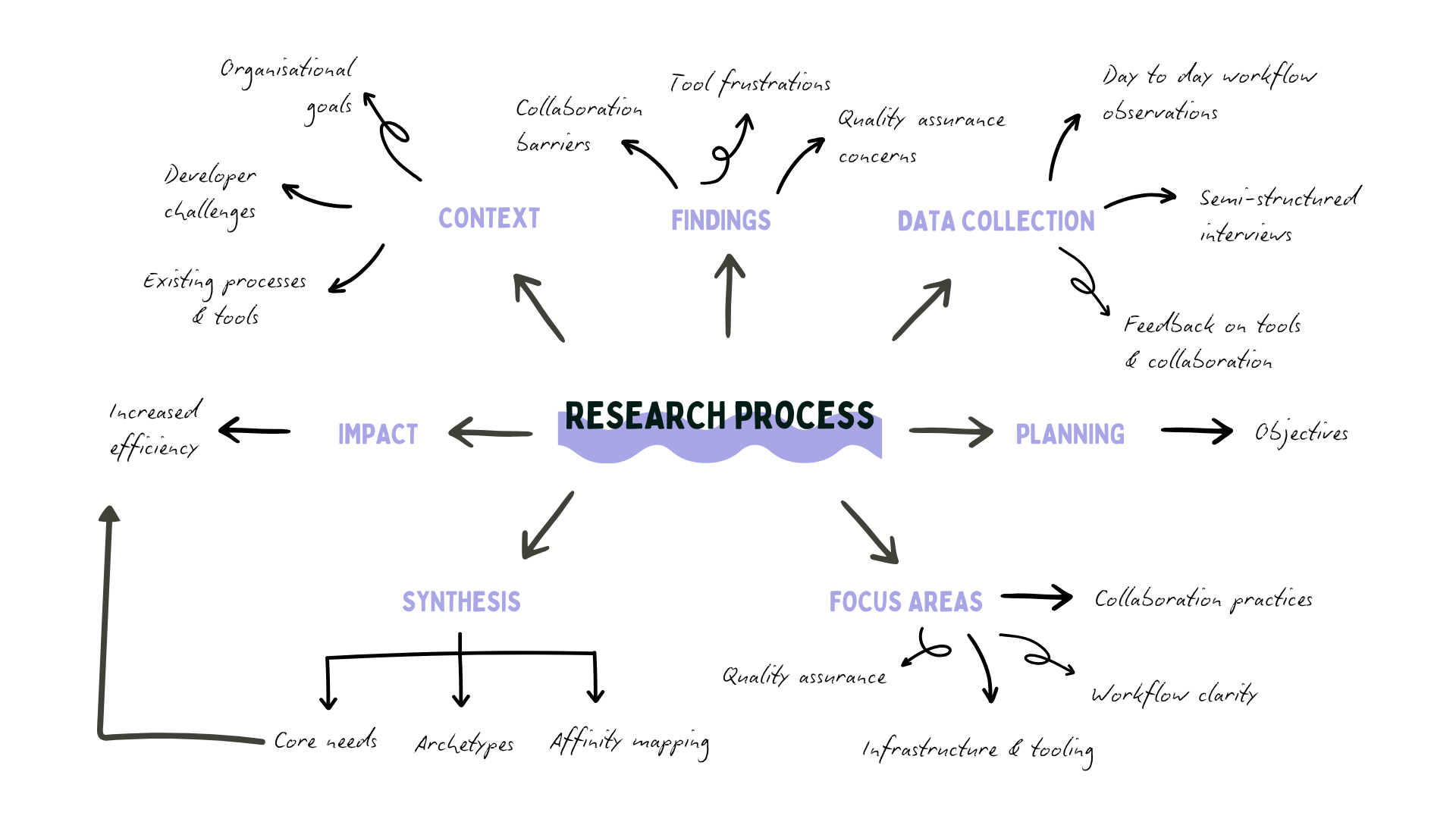After completing the interviews, I wanted to make sure the findings didn't just reflect my
interpretation alone. Since this was an internal project, I hosted a collaborative workshop with
other researchers and engineers to review the data together.
We used Miro to build affinity maps, clustering quotes and observations into themes. This not
only
helped validate the insights but also gave engineers the
chance to actively shape the narrative
around their own challenges. The approach built trust in the process and made sure
the outcomes
were
grounded in shared understanding. From these discussions, five core themes emerged:
Reactive Collaboration
Collaboration often happened reactively, triggered by immediate project needs rather than built
into
daily routines. This limited knowledge sharing across squads and left engineers feeling
disconnected.
I don't know much about certain teams… it would be good to hear more from
them.
Recommendation
Introduce structured knowledge-sharing sessions to encourage proactive collaboration and
stronger cross-team connections.
Confusion from Structural Changes
Recent organisational changes created uncertainty. Engineers spoke about unclear
responsibilities
and shifting workflows, which made prioritisation difficult and left squads feeling unsettled.
We're struggling with the new squad structure because there isn't enough
clarity on our roles.
Recommendation
Improve communication and provide clear guidance during
organisational changes to reduce uncertainty and maintain team focus.
Unclear Task Prioritisation
Engineers struggled to manage unexpected bugs and undefined tasks because there were no clear
troubleshooting workflows. This caused delays and uncertainty about next steps.
Sometimes, when working on a bug, I understand the problem but not the
steps to
resolve it.
Recommendation
Create clearer guidelines and documentation to support engineers
when handling complex or undefined tasks.
Technical Limitations
The existing technology stack created friction, especially with dependencies and service
integrations. This slowed development and made new features harder to deliver.
Life as a developer would be easier if integration between services was
more
seamless.
Recommendation
Modernise the technology stack and improve integration between
services to enhance efficiency.
Quality Assurance Inefficiencies
With no dedicated QA personnel, engineers were responsible for testing, increasing workload and
raising concerns about quality. All participants flagged
this as
a
key frustration.
Recommendation
Introduce automated testing or dedicated QA roles to reduce the
burden on engineers and improve quality.
To share the insights, I pulled together a presentation for the senior leadership team that
focused on the key findings and the most pressing issues. I also created a more detailed report,
with anonymised data, which was shared with researchers and managers who wanted to dive deeper.
This way the findings were easy to digest at a high level but still backed up by evidence when
more detail was needed.


